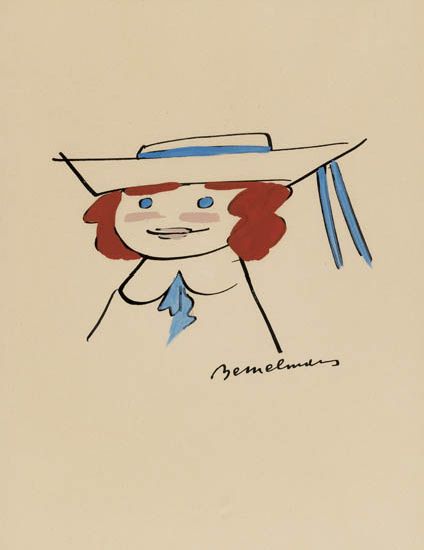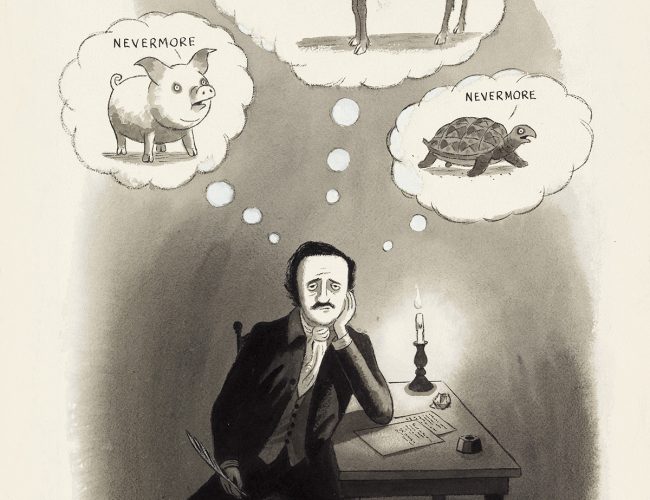Before O. Henry: William Sydney Porter’s First Professional Commission
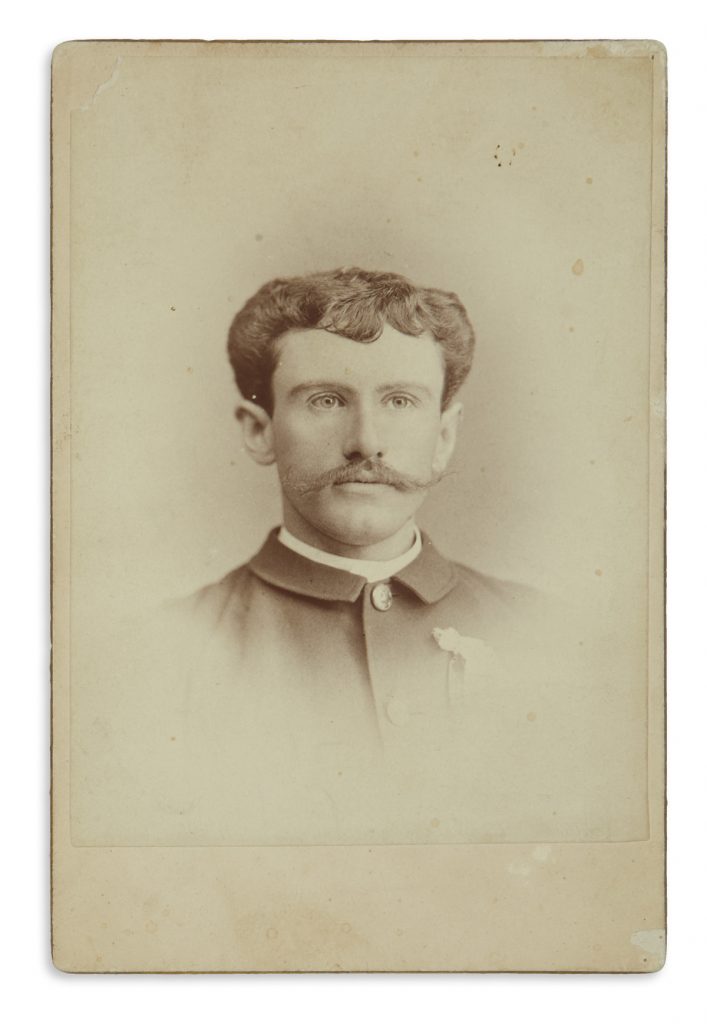
William Sydney Porter, best known to posterity as the author O. Henry, was raised in North Carolina and moved west to Texas as a young man in 1882. After a stint on a sheep ranch, he settled in Austin, TX, where he worked various odd jobs while exploring his interest in writing and drawing. Our winter-spring 2020 sale of Printed & Manuscript Americana on March 10 is set to offer O. Henry’s first professional commission. Below, Rick Stattler, the house’s Americana specialist, tells the story of the mining memoir that never came to be.
Carbonate Days
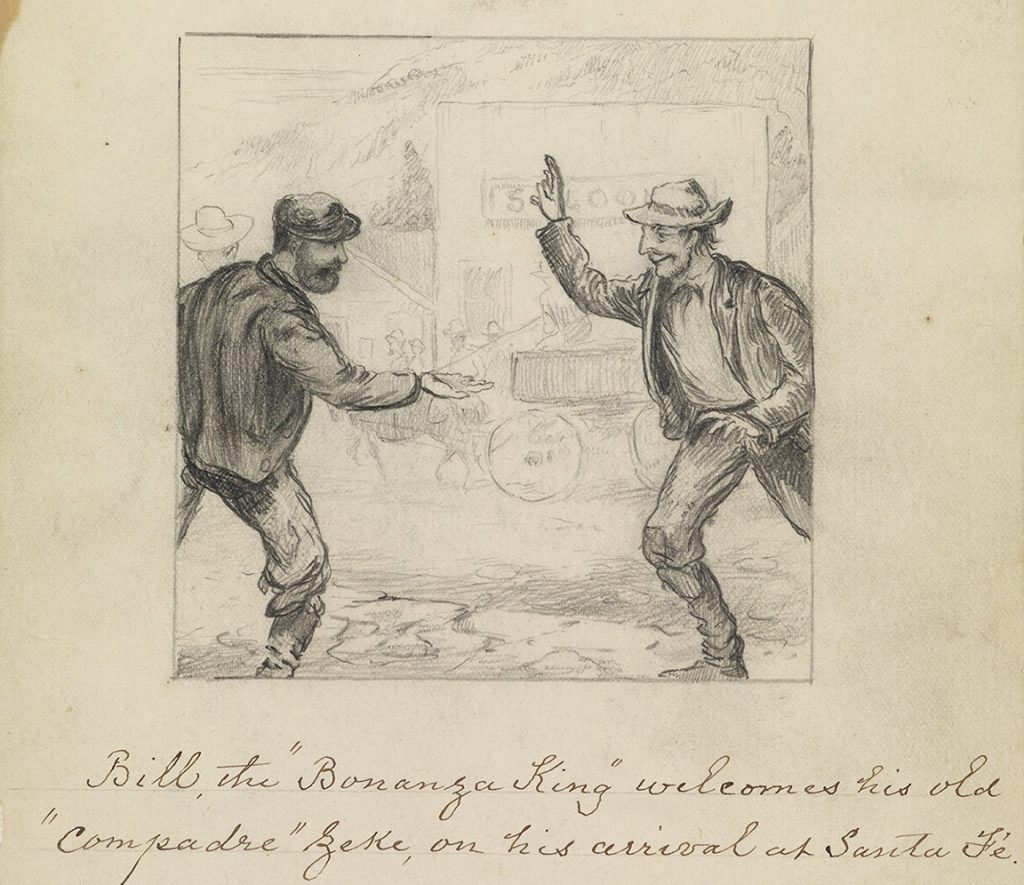
Created when Porter was about 21 years old, the drawings were done to illustrate the frontier mining memoir of Joseph T. Dixon, an eccentric character almost universally known as “Uncle Joe.” Dixon had spent several years prospecting in the Rocky Mountains and was brought to Austin, by a friend named John Maddox to set his colorful memories to paper in what was supposed to be called Carbonate Days. A young Porter was brought on to illustrate the project, working directly with Dixon for about three weeks while they shared a small cabin on Maddox’s property. After, Dixon spent about six months writing at Maddox’s home with arrangements made to send him to New York to secure a publishing deal. The night before his departure, in a fit of insecurity, Dixon tore the manuscript into small pieces and threw it into the creek. Fortunately, Porter’s illustrations had been given to Maddox for safekeeping.
William Sydney Porter’s Illustrations
The drawings now had no practical purpose with the destruction of the manuscript, but they were not immediately discarded. Porter gave them to a local girl named Pauline Haynie, who kept them as a memento. They surfaced in 1912 when three items were published in Rolling Stones, the twelfth and final volume of O. Henry’s collected works. “The Emigrants’ Camp” drawing is reproduced, “Early Visitors” (published as “Morning Visitors”), and “Zeke Sells the Basket of Toads to the Bloated Bondholder (Herlow’s Hotel)”. So far as we know, the remainder remain unpublished.
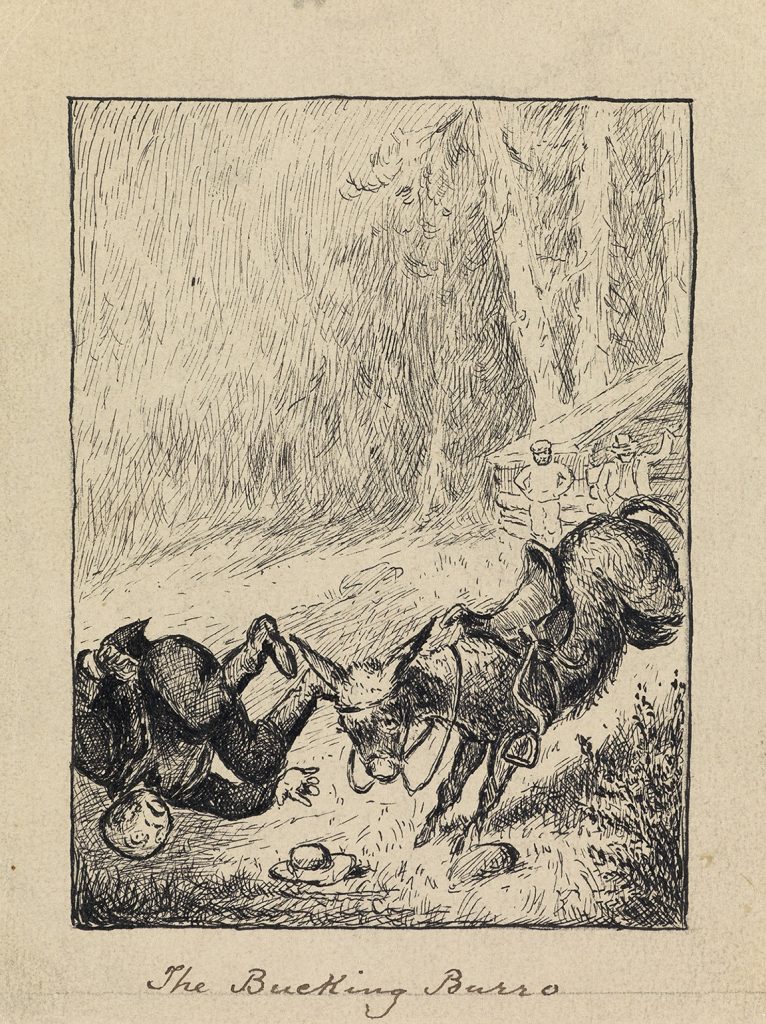
Porter’s illustrations are almost all captioned in manuscript, and appear well suited for a lively Wild West narrative, filled with adventure and comic overtones. A man being startled awake by a room full of mules is titled “Early Visitors.” Several show street scenes in rough-edged mining towns and two show attempts to buck a burro, while one recalcitrant mule is captioned “Don’t wish to go prospecting.” A young woman is captioned “the Señorita of the Cañada.” A claim jumper with a gun to his head is titled “The jumper taken by surprise.” Several of the captions suggest specific locations, all in New Mexico: “Cañon Pino”; the head of the Pecos River; Herlow’s Hotel in Santa Fe; the Atchison, Topeka and Santa Fe Railway at Apache Cañon; the head of the Rio Grande; and a Santa Fe street scene. Dixon’s later biographical accounts note time in Colorado or “the Rockies” generally. A 1917 profile called him a former “miner and prospector in the Rockies from British Columbia to the Mexican Sierras” who participated in the Leadville, Colorado gold rush. These drawings only hint at the stories Dixon told the young Porter in 1884.
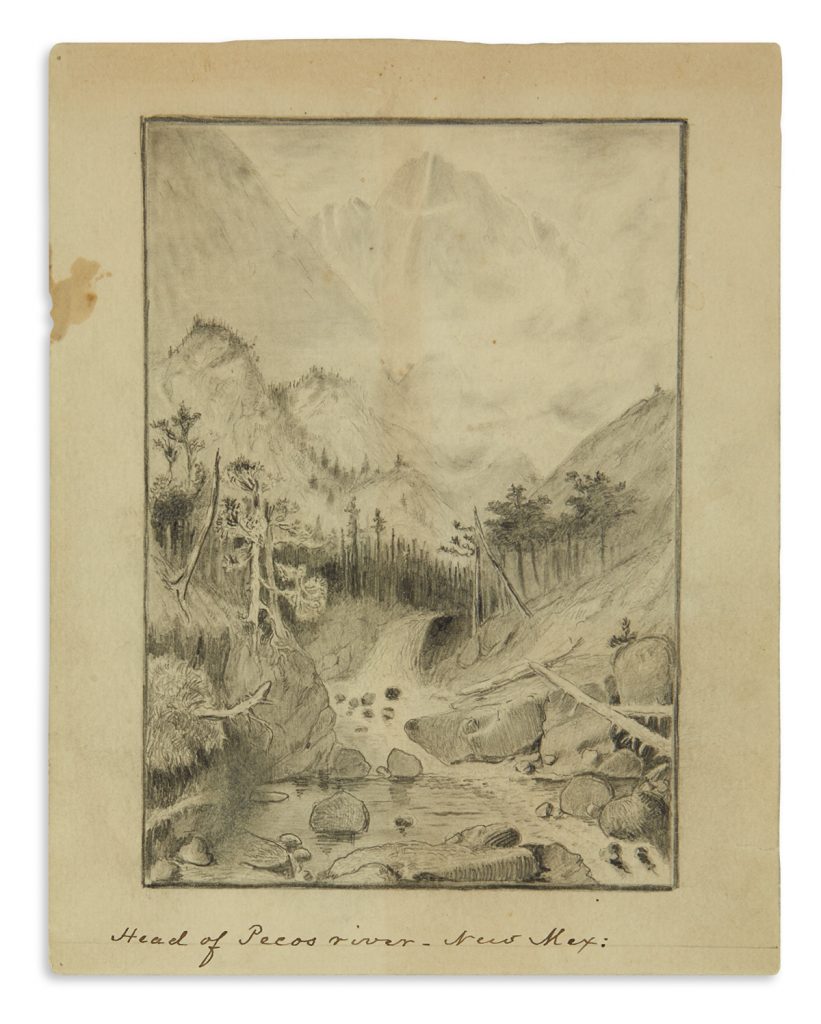
The drawings are accompanied by two photographs: a small worn tintype of two men said to be young Porter with his friend Wilcox, circa 1884 or 1885; and a well-preserved cabinet card portrait of Porter with the backmark of Hamilton Briscoe Hillyer of 916 Congress Avenue, Austin, Texas (pictured above). Hillyer was at this address from about 1881 to 1887. Also included are 4 letters and related clippings of later owner John Hagelstein, 1925-39.
